In the middle of summer, outdoors in the UAE, there is only one thing that comes a precious second to water – shade.
And when you get several hundred ghaf trees in one nice, flat valley between sand dunes and backing into mountains, it is a welcome forest of shelter from the overpowering sun.
This is Al Hayer forest, one of my all-time favourite camping spots.
It’s a perfect campground – roughly a third of the way towards Dubai from Al Ain, easily accessible on sand tracks so beginners can get right into the action without feeling left out, yet near an expanse of open sand dunes for an exciting drive for those feeling adventurous.
Behold, your destination:
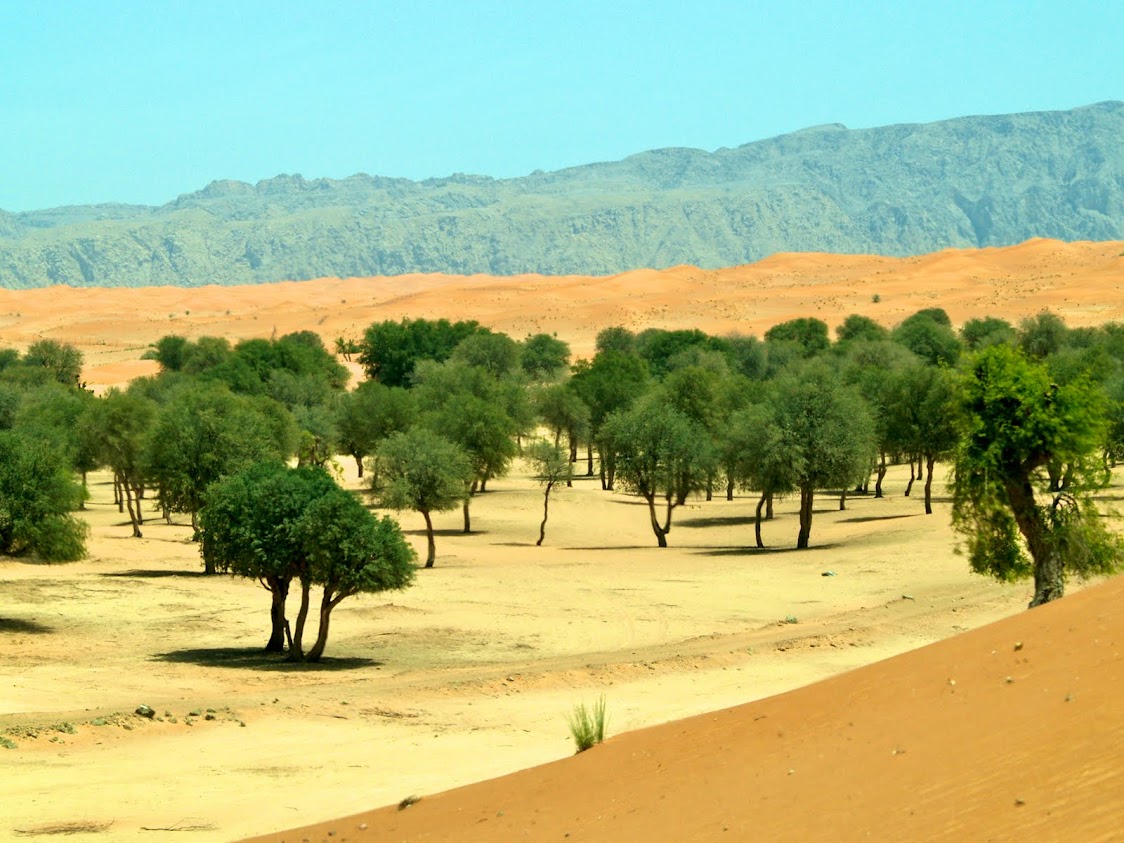
From a distance, it doesn’t seem much; but, once in the forest proper, you will marvel at how a forest can be in the middle of sand dunes!
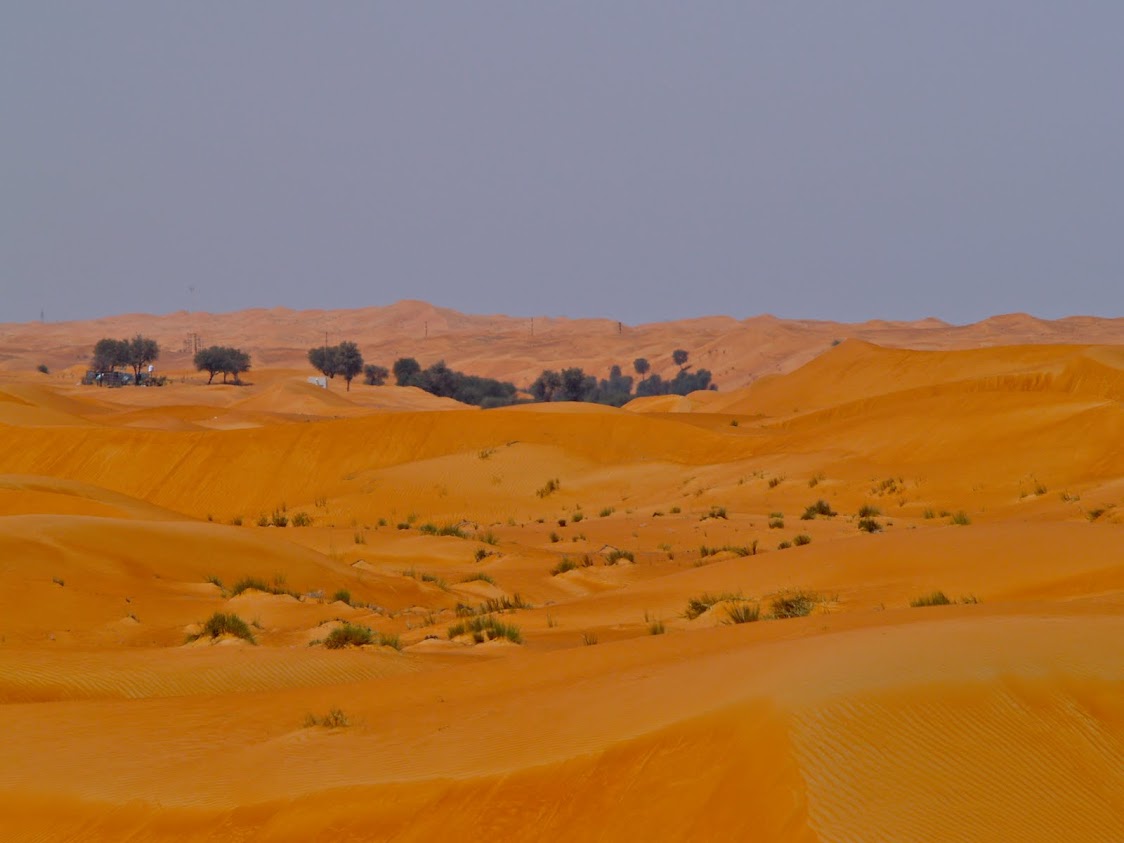
The entrance track is very wide and easy to navigate – just follow the GPS track provided.

There’s even a cheater easy track that follows the UAE-Oman border fence so you can reach the forest without going over dunes.

And in the forest, the tracks are easy to follow.

Download the KML file for your GPS by clicking here. Once downloaded, you can import the file into your GPS device and take it on the road, or double-click that file and it will open automatically in Google Earth if you have that installed (all adventurers should! Google Earth).
View GPS device in a larger map
It used to be that in this area you could scoot over into the Omani mountains, and enjoy both dunes and wadis in the same day – but, alas, the border fence now keeps you on the sandy side only.
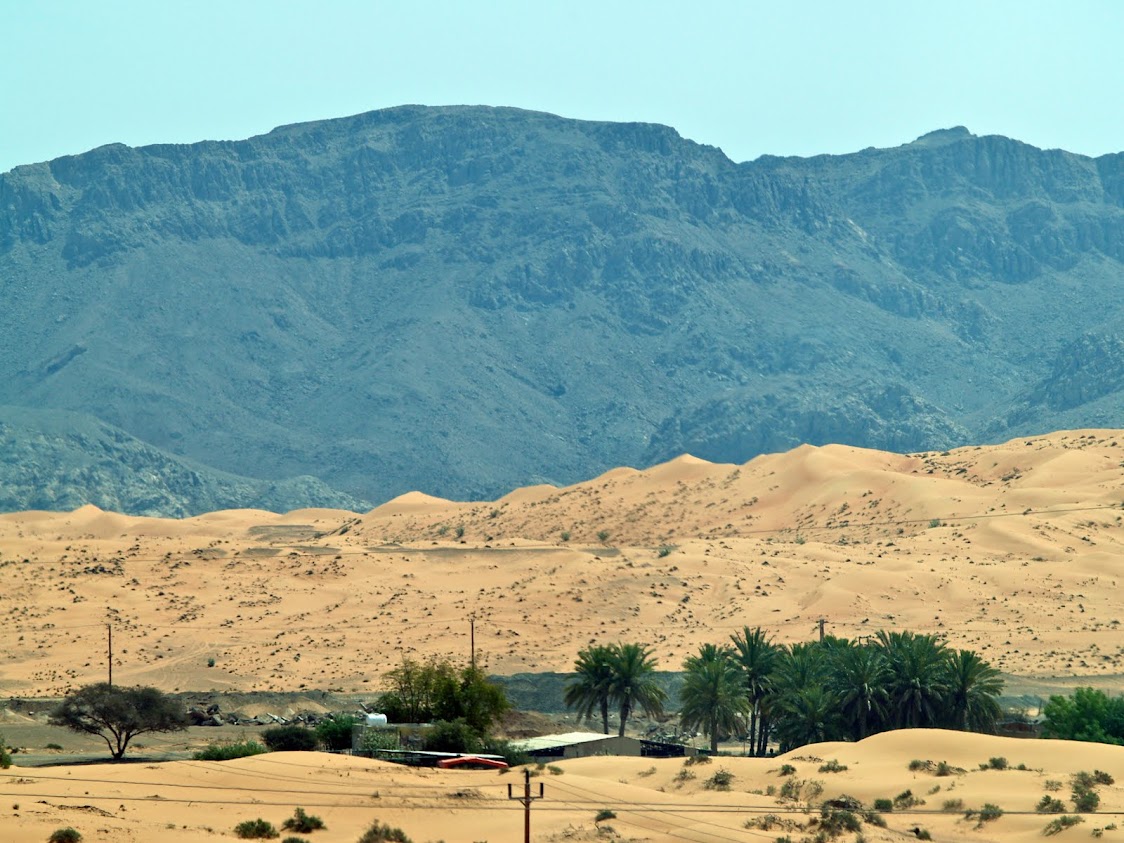
The GMC Acadia did well, fighting through the soft stuff with gusto.
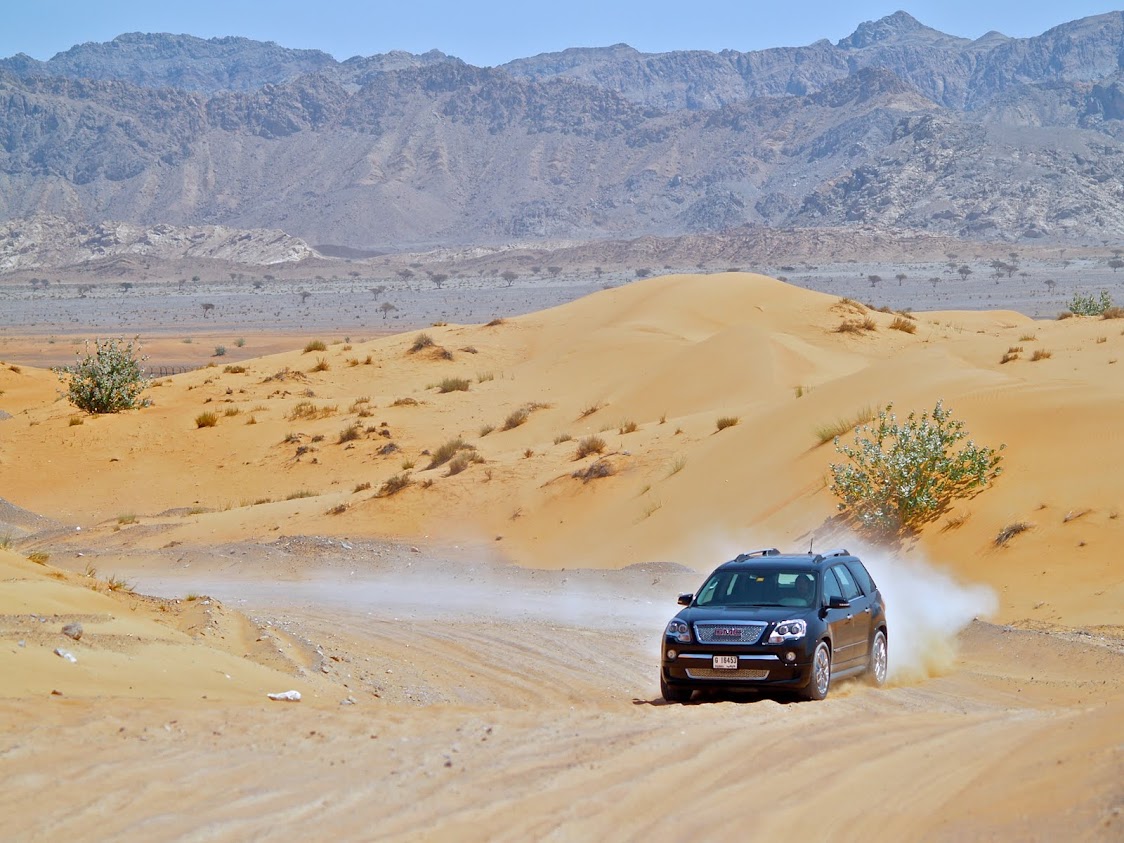
The Acadia’s 3.6L V6 engine belts out 288 horsepower, and makes climbs like the one in the photo below possible.
The suspension is aimed towards sporty tarmac, though, so the limited wheel travel requires a relatively smooth track – but nobody says the smooth track can’t be pointing up to the sky!!!

The forest of ghaf trees is an ideal camping spot: shade is assured, and good driving dunes surround it.
The trees are all old-growth, and no new saplings can be observed. This is because the camels eat them before they can grow tall enough, and so once these trees are gone – no more forest!
The reason the forest exists is because of the rain that runs off the nearby Omani mountains and percolates underground. The area is also a fast-growing agricultural hot-spot, with many farms taking advantage of the underground water.
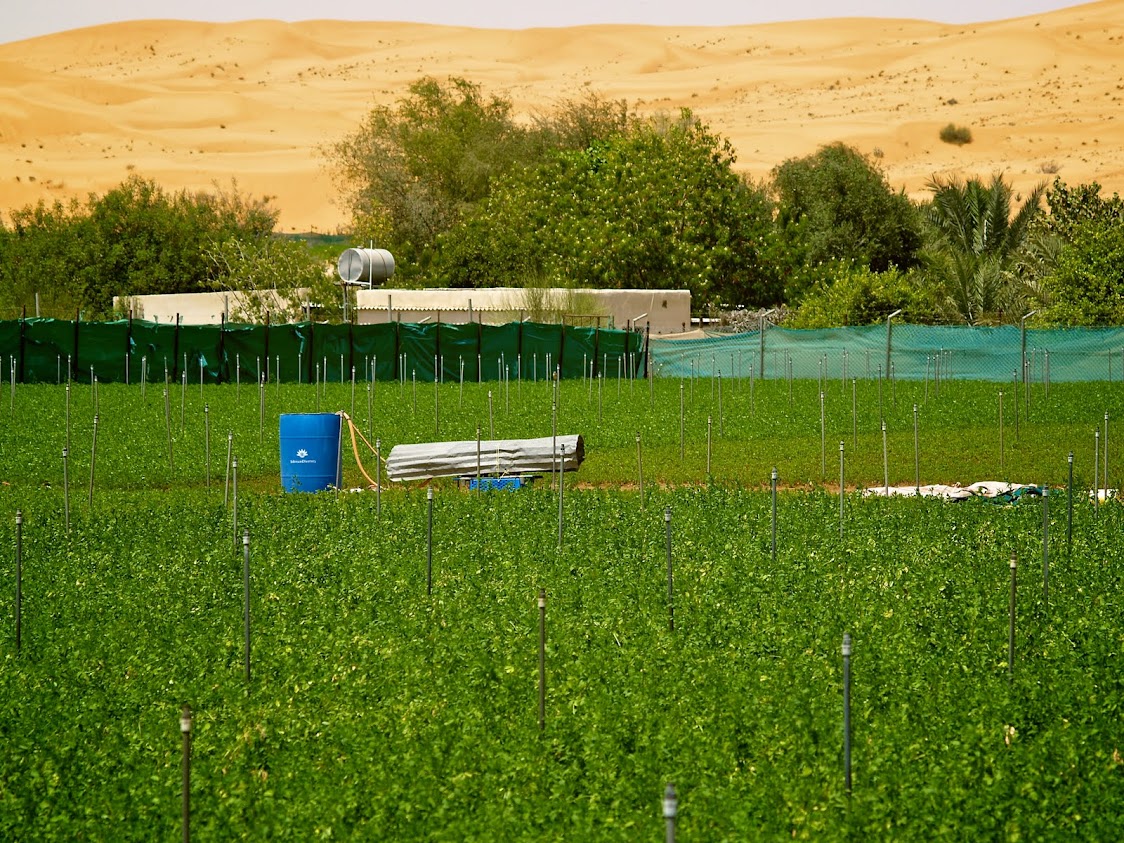
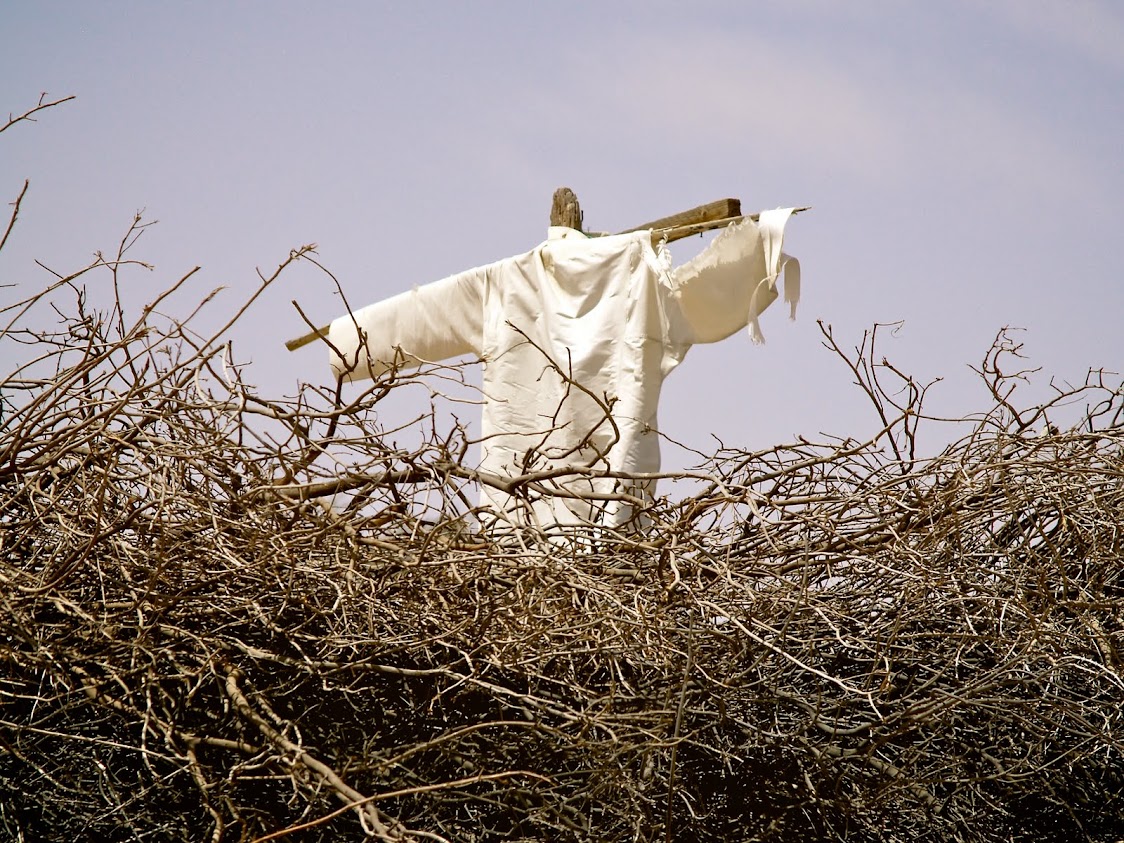
A note of caution – but not to scare you.
The rich water resources and wooded areas are not only a boon for man. All sorts of wildlife is attracted to the trees, from foxes to owls, to snakes (only seen tracks), and especially insects.
We’ve camped often in the Al Hayer forest, and almost every time we’ve found a small scorpion under the tents in the morning. Don’t kneel down to roll up your tent, but pick it up and move it while still erect.
Then look carefully on the flat ground where the tent used to be and you might spot a little sandy movement – a baby scorpion! Awwwww, how cute!
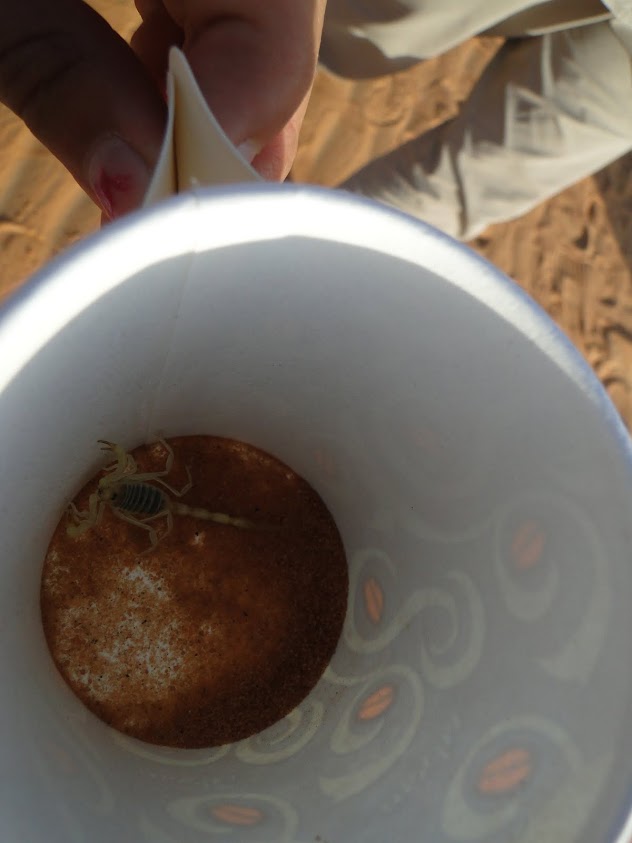
View a pdf file of the original article, as published, or read the archived newspaper article on The National website here.
My disclaimer is here.
